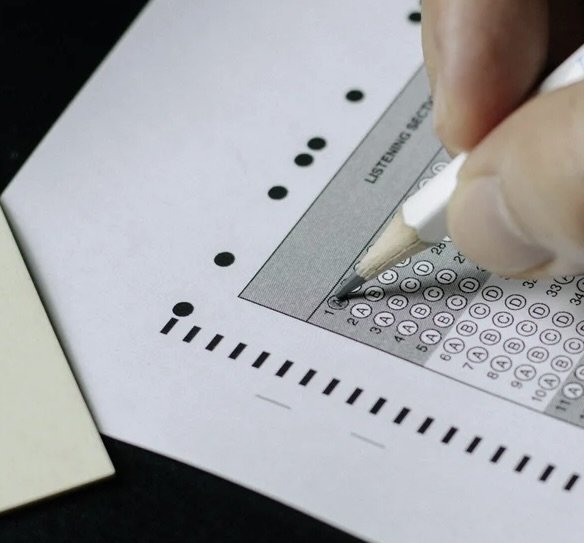Commentary: Better Incentivizing the Right Degree Programs is the Solution to Graduate Underemployment
A 2024 study found 52 percent of college graduates were underemployed in their first year, meaning they held jobs that did not require a degree.
Commentary: California’s Wholesale Rebuke of Statewide Testing in an Attempt to Impose Equity, Set Students Up for Failure
The number of incoming students at the University of California requiring remedial math increased thirtyfold over just a five-year period, with nearly one in five students failing to meet standards for 8th-grade-level math upon admission in 2025.
Commentary: A Memphis RISE Academy Senior's Perspective on the Importance of Postsecondary Planning
As a senior at Memphis Rise Academy who wants to become a pediatric registered nurse, I have learned that success after high school is about having the right support and opportunities when you need them – from family, counselors, and teachers.
Commentary: Maintaining High Standards in Math and Science is Critical to Ensuring Tennessee Students Benefit from the ‘Nuclear Renaissance’
As Tennessee leads the nation in a “nuclear renaissance”, graduating students will be presented with new opportunities to enter high-skill, high-demand careers such as Nuclear Technician, Nuclear Power Reactor Operator, and Nuclear Engineer.
Commentary: A Senior's Perspective on Post-High School Pathways
My journey toward becoming a NICU (Neonatal Intensive Care Unit) nurse illustrates both the opportunities available to students and the guidance needed to help us navigate critical life decisions.
Commentary: Lawmakers Should Aspire to Something Better by Building Upon the Assessment Policies that Kick-Started our State’s Gains
Tennessee lawmakers can go back to the education standards that routinely placed our state at the bottom or they can aspire to something better by building upon the successful policies that kick-started our state’s gains.
Commentary: A Lesser-Known Provision in Trump’s One Big Beautiful Bill Could Help Bridge the Gap Between Postsecondary Education and Workforce Readiness
Buried deep in the bill, this provision will expand Pell Grant eligibility to students pursuing nondegree credentials.
Commentary on the 2025 TCAP Data: Our Compass for the Work Ahead
SCORE President & CEO David Mansouri unpacks five key data insights from the 2025 TCAP results, offering a look at the wins and persistent gaps while charting the course for our work ahead.
Commentary: Contention gets the spotlight, but collaboration is helping Tennessee students succeed. See for yourself
Lawmakers achieved transformational victories that will truly improve the success of Tennessee children during the 2025 legislative session. You just have to know where to look for the sunshine.
Commentary: Metro Nashville Public Schools fails students, gaslights over charter schools
Across Nashville, families are waking up to a painful truth: The public education system that’s supposed to serve all children is too often more invested in maintaining power than producing outcomes.
Commentary: Expanding the Tennessee Future Teacher Scholarship Act is a commonsense way to address the state’s teacher shortage
When we talk about the state of education in Tennessee, we often hear of staffing shortages and issues caused by teacher retention. Last fall, more than 800 classes in Middle Tennessee alone did not have a full-time educator.
Commentary: The U.S. education system could learn a few lessons from Taiwan
Walking into my first classroom in Taiwan was like stepping into another world of education. The desks were arranged with precision, the students were armed with textbooks and an air of focus, and the expectations were clear: excellence was not optional, it was the norm.
Commentary: Education innovation can fuel economic independence
As Tennessee looks to the future, the connection between innovative education pathways and economic independence is undeniable. By reimagining how students are prepared for the workforce, we can equip the next generation with the tools they need to thrive in a fast-changing economy.
Commentary: Writing Tennessee’s future starts in our schools
With the election season finally behind us, I find myself returning to two key themes after some reflection. First, the national electorate, and its preferences, has fundamentally realigned over the last decade. Our country and our state spoke decisively last Tuesday, and we must listen.
Second, as I reflect on the tremendous progress our state has made in public education over the last twenty years, I look to the future. As Tennesseans, we will all play a part in writing this future, and we will need to make choices.
Commentary: Correcting the “honesty gap” in testing was good business in Tennessee
Between 2007 and 2011, reforms to better align Tennessee with national assessments substantially narrowed the “honesty gap” that occurs when students score higher on less demanding state assessments than they do on national assessments. These reforms helped Tennessee dramatically improve its ranking on national assessments and efforts to undermine them are misguided.
Commentary: My daughter has attended public, charter, and private school. Here’s what I learned and how school choice can improve your child’s educational journey.
As a parent, we spend our days constantly evaluating decisions that will shape our children into capable adults and preparing them for the journey ahead. Perhaps one of the most important of those decisions is determining what pathway we select for our child’s education. As a parent of two, I have learned that the answer to that question is not stagnant and can change alongside the needs of the child.
Commentary: Linking Mental Health and Education to Give Tennessee Kids a Healthier Future
In 2007 — the year I retired as Senate majority leader — Tennessee got a wakeup call when a U.S. Chamber of Commerce report awarded our state an “F” for low academic performance. After conversations with stakeholders statewide to develop a shared vision for improving student outcomes, one thing became clear: Tennessee had to begin making significant changes in education.
Commentary: How District Leaders Should Navigate the Perfect Storm of Budget Shortfalls & Declining Student Enrollment
It makes intuitive sense: Smaller districts with fewer kids need fewer schools. A district with 40,000 students operates many more school buildings than a district with 20,000, which in turn runs more than a district with 10,000. With widespread enrollment declines (for example, California’s school-age population is forecast to drop by 15% over the next decade), many districts are now grappling with whether to close one or more schools.
Commentary: Making it in music is tough. A four-year degree in music can offer advantages.
It’s a classic American story: Someone moves to the big city with nothing to their name but a dream. Maybe, with good timing and some luck, they can turn that dream into something tangible. Social media appears to have made finding stardom and success in the music business as easy as posting some TikTok videos. The reality, though, is that it’s difficult to go viral online, and it’s even harder to leverage a few million views on a catchy song into a lasting career.Navigating the music business can be challenging. A recording industry degree can make it easier to build a sustainable career by providing connections, skills and credibility. The same is true for any competitive industry.
Commentary: Legislators should not join education reform opponents
Tennessee lawmakers face a choice: embrace innovation in public education by supporting charter schools or continue resisting change. Public charter schools present an opportunity, not a threat, to Tennessee’s education system.





















